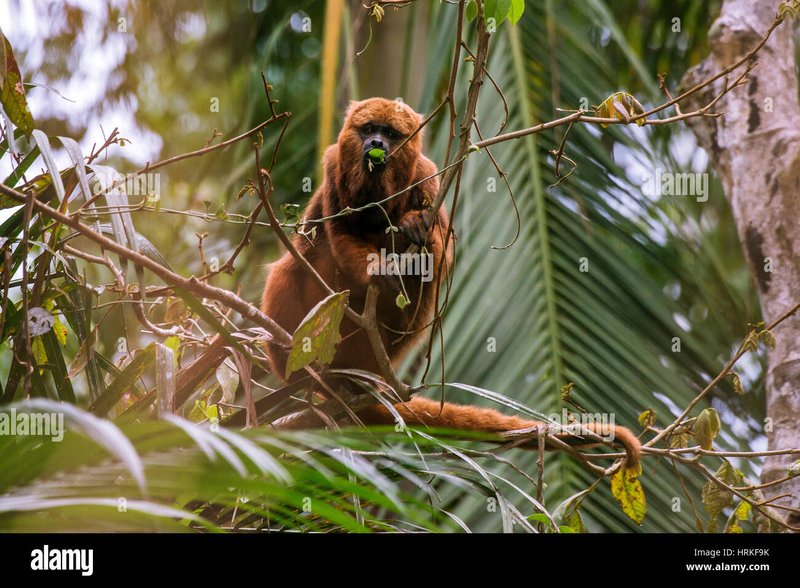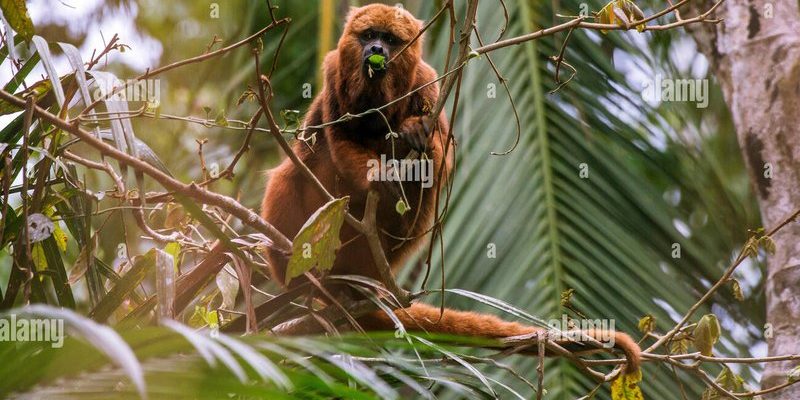
Let’s break down how these remarkable primates evolved and adapted over millions of years. It’s not just about their loud calls; it’s about how they fit into the larger picture of our planet’s history. From their habitats in the trees of Central and South America to their unique social structures, the story of the guariba is as diverse as the jungles they inhabit.
Origins: The Ancestral Roots of Howler Monkeys
The story of the guariba begins around 20 million years ago during the Miocene epoch. At this time, the earth was undergoing significant changes, and primates were starting to diversify. Most scientists believe that howler monkeys share a common ancestor with other New World monkeys. Think of this ancestor as a distant relative at a family reunion—connected but different in many ways.
Over time, these primates branched off in different directions. Fossils suggest that some began adapting to a life high up in the trees, developing physical traits that would set them apart. Their limbs grew longer, and their tails became stronger—almost like nature was providing them with a built-in harness for swinging through branches. The guariba’s unique vocal cords, which allow them to produce those signature howls, also emerged around this time.
The Evolution of Their Vocalizations
Honestly, one of the most striking features of the guariba is their vocalization. It’s not just a way to communicate; it’s part of their identity. Their howls can reach up to 100 decibels, loud enough to be heard from miles away! This dramatic evolution in vocal ability likely served several purposes.
First, it helps establish territory. You might think of it like shouting out, “This is MY space!” to other groups of howler monkeys. It’s a way to avoid conflict and mark their home turf. Additionally, their howls can also strengthen social bonds within their groups. When one howls, it’s like a call to action, letting their friends know they’re nearby and that it’s time to hang out.
Interestingly, their vocalizations have also led scientists to study how sound works in the tree canopy. They discovered that the dense forest alters sound dramatically, which gives howler monkeys an edge in communication. They’ve adapted to their environment in a way that helps them thrive.
Social Structures: A Look at Howler Monkey Life
You might be wondering what life is like for a guariba. These monkeys are known for their social nature. Typically, they live in small family groups, which can range from just a few members to over a dozen. Picture a cozy family gathering where everyone plays a role—parents caring for their young and older siblings helping out.
The social dynamics of howler monkeys are fascinating. They have a hierarchy, often led by a dominant male. This leader gets first dibs on food, while others wait their turn. The social bond helps keep the group safe from predators, as they work together to watch out for one another.
Despite their strict hierarchy, the group engages in playful interactions. They groom each other, share food, and often engage in loud vocal exchanges, reinforcing their bonds. It’s like a happy family reunion filled with laughter and a few heartwarming moments.
Habitat and Distribution: The Guariba’s Jungle Home
Guaribas are primarily found in Central and South America, thriving in tropical forests, mangroves, and woodlands. Their preferred habitats are usually dense canopies, which not only provide food but also safety from ground predators. You might imagine them lounging on a branch, munching on leaves like a gourmet meal—because, let’s face it, they’re picky eaters!
Different species have adapted to specific areas. For instance, the black howler monkey is common in the humid forests of Costa Rica, while the mantled howler thrives in the more varied terrains of Brazil. These adaptations speak to their evolutionary journey and how they’ve managed to occupy various ecological niches.
However, these habitats are under threat. Deforestation, agriculture, and urban development are major challenges for the guariba. Their homes are disappearing, leaving them vulnerable. Conservation efforts are vital to ensure these magnificent creatures continue to thrive in their natural surroundings.
Conservation Status: Protecting the Guariba
So, where do we stand today in terms of protecting the guariba? Unfortunately, many howler monkey species face threats from habitat loss and hunting. According to the International Union for Conservation of Nature (IUCN), some species are considered endangered, which makes the need for conservation even more urgent.
Efforts to protect howler monkeys include creating wildlife reserves and promoting reforestation projects. Community education is also vital. When locals understand the importance of preserving these animals, they’re more likely to support conservation initiatives. It’s like planting a seed; with enough care, it can grow into something beautiful.
But it’s not just about saving the monkeys. They play a crucial role in their ecosystems by helping to disperse seeds and maintain the health of the forests. Protecting howler monkeys means preserving the entire forest community.
The Future of Guaribas: Challenges and Hope
Looking ahead, the future of guaribas hinges on our collective actions today. Climate change poses another significant threat, affecting their habitats and food sources. As temperatures rise and weather patterns shift, howler monkeys may need to adapt once more.
Thankfully, there’s hope. Environmental organizations are working tirelessly to create sustainable practices and policies. Education and awareness campaigns are essential in helping people understand the importance of the guariba and the ecosystems they inhabit.
Innovative solutions like eco-tourism are also emerging as a way to help save these monkeys. By attracting visitors to their habitats, communities can benefit economically while promoting conservation. It’s a win-win situation that highlights the beauty and significance of these incredible creatures.
The guariba, or howler monkey, is more than just an animal that makes impressive noise. Their evolutionary history is a captivating tale of adaptation, social bonds, and challenges in a changing world. From their ancient ancestors to their current plight, these monkeys remind us of the intricate balance we share with nature.
As we celebrate their legacy, we have the power to make a difference. By understanding their importance and advocating for their protection, we can ensure that future generations will marvel at the howler monkey’s call echoing through the trees. So, let’s keep the conversation going—not just about the guariba, but about all the wonders of our natural world.

